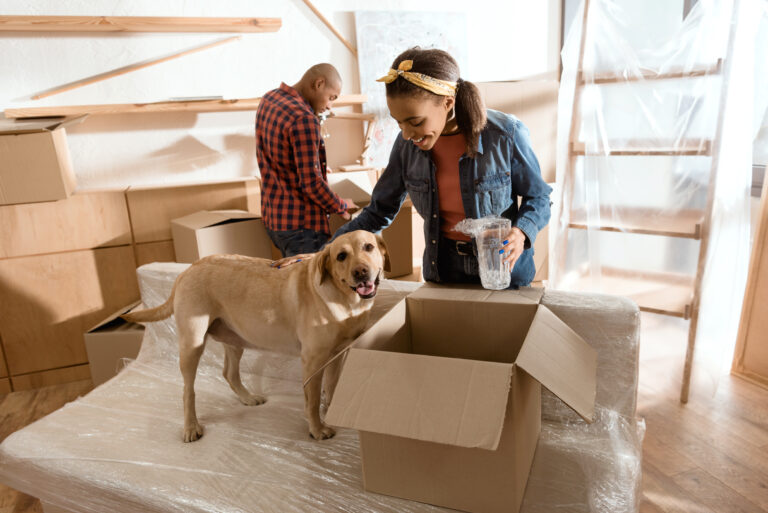
Your pets are important members of your family, and when you choose to move—be it across town or across the country—their needs should be factored in. There are a lot of considerations to make before, during, and after your move. Read on for some helpful tips regarding moving with pets.
Contact Your Vet
You’ll want to take your pet to the vet before a move to both ensure their health is in tip top shape or any conditions are being managed and to get their records and any prescriptions to take with you. You can also ask your vet for advice regarding moving and even see if they have any recommendations for a new vet in your area. If not, you should start looking for a new vet as soon as you can so your pet doesn’t go without care once you’ve made the move. If your pet has a microchip, you’ll also want to get your contact information updated, ideally before you leave (and if they don’t and simply wear a collar, you should update the information there instead).
Prepare and Plan for Moving Day Transportation
How exactly you transport your pets is largely dependent on how long the trip is and what method of transportation you are using. If you are flying, you’ll need to consult the specific airline you are using to find out their policies and regulations regarding traveling with pets. Sometimes you are able to carry your pet on board and other times, particularly with larger pets, they need to be stowed away. Having your pet stowed in cargo is not an ideal situation for them so if you can avoid it, you may want to. If not, strive to have as few transfers as possible. If you are driving, you have much more control over your pet. You’ll generally want to put your pet in a crate or carrier, depending on their size, and make sure they are secured. Some pets fare better with a towel or blanket covering the carrier so they feel more secure and aren’t overwhelmed by the changing environment. You’ll likely want to schedule breaks on your drive to let your pet out to use the bathroom, either outside for a dog or in a litter box for a cat. If you are letting your pet out of your car, make sure they are leashed the whole time. If it is a multi-day trip, make sure the hotel you plan to stay at is pet-friendly. If you are moving states, check out what regulations or laws your new state has, if any, regarding animals. You can do so through the Department of Agriculture.
Help Them Settle In
Getting accustomed to a new home can be a real adjustment for animals, and there are things you can do to help make it easier and so they don’t get overwhelmed. On move-in day specifically, there is generally a lot of coming and going and opening and closing of doors. Consider leaving your pet in a single room, a fenced-in backyard if you have one, or even board them off-site for the day. This can ensure they aren’t able to escape and are out of harm’s way while things are being moved. Once the dust starts to settle, it’s time for your pet to learn the lay of the land in their newfound environment. Try to keep their sense of normalcy as much as possible; if they are used to certain feeding and walking times, the more you can stick to them in your new home, the better. Do some research about what is and isn’t normal behavior for your kind of pet when adjusting to a new home. For example, it is not out of the ordinary for cats to hide and be withdrawn for a few days following a move. You can even restrict your kitty to just one room for a day or two before exposing them to the rest of your home, or even one room at a time, in order to ease them into it. Before long, though, your pet should start to feel more comfortable in your new home and be back to their usual temperament and behavior. You can also check out our tips for pet-proofing your new home.
If you’re ready to move somewhere new and buy a home, contact one of our experienced Loan Officers today to discuss your mortgage options!


